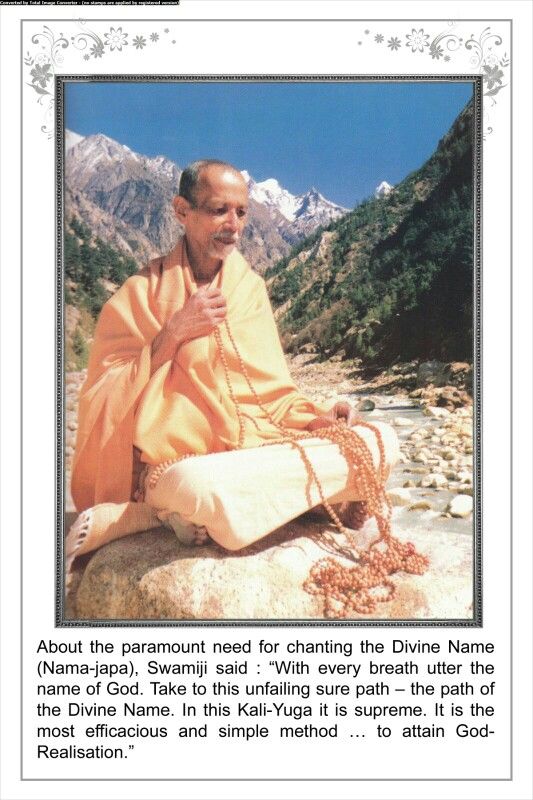PRACTICAL STEPS TO INNER PEACE - 1.3. Sri Swami Chidananda.
----------------------------------------------------------------------------------------------------------------------------
-----------------------------------------------------------------------------------
Tuesday, August, 3, 2021. 4:16.AM.
1. PEACE IS EVER-PRESENT -3.
---------------------------------------------------------------------------------
And it was during the Kalinga war, when he invaded the Kalinga territory, and his powerful army annihilated the soldiers of the opposing forces. But the Kalinga people were a very brave race of people, and they went on fighting. When the soldiers were annihilated, the civilians started fighting. And when the civilian youths were also slaughtered, then Ashoka’s commander-in-chief was aghast when he saw coming towar his army old people with sticks and behind them women and children. The soldiers could not proceed, they stopped fighting.
Then he tells an missary, “Ask them, what they have to do in this place? This is a battlefield. Why are they here? Tell hem to go away.” When the emissary went and asked the elders, “What are you doing? Why are you here?” The elders replied, ”Tell your emperor, your army has slaughtered all our forces, all our youth, only we are left. Therefore we come to confront your army because there is no one else." When this information was taken to Emperor Ashoka he started pondering, “Ah! I have slaughtered the flower. Our soldiers have not only fought with soldiers, but they have slaughtered even the youth, and there is no young man left, only old eople, women and children.”
Then the shocking realisation come, and it is said that the Dhauli River ran red at that time. He realised the horror of what he was doing, and he said, “Never again will Ashoka cross is borders to conquer other territories. If he goes, he will go as a friend and bring harmony. Enough! I shall expand the territory of my heart and not the territory of my dominion and power.” Warrior Ashoka becameDharma Ashoka. He took the Buddha Dharma for himself.
----------------------------------------------------------------------------------------------------------------------
So we have a tradition of a great Emperor whose empire covered the whole of India, the great empire of Ashoka. His edicts are found everywhere from far South until far North. So here we have the adoption of Shanti (Peace) as a political policy. And the Jagadguru Sankaracharya of Dwarikapeeth in Gujarat said, “The name Bharatavarsha indicates that this is a country that has great love for Prakash, Jnana, light: light of wisdom, light of knowledge, light of highest Brahma Jnana. yotishaam api tajjyoti tamasah parama ucchyate (That, the light of all lights, is said to be beyond darkness.)
He said, ”Many people say Bharatavarsha got the name from King Bharata. It is a land where the people are great lovers of light. ‘Bha’ means light and ‘Ratah’ means those who are engrossed in light. Therefore, the land where people have intense love for wisdom is Bharatavarsha.” The culture of such people is Bharatiya Sanskriti. Our religion stems and originates from the mass of ancient wisdom, the Vedas. And the Vedas declare that attaining divine wisdom alone can liberate the human soul from this wheel of birth and eath.
All that the Jivatma is undergoing now, this Samsaric experience, is due to Ajnana, Avidya (ignorance). And the only solution is Vidya (knowledge). arkness can go only through light. Therefore they insisted upon this truth that only the experience of that supreme principle, which is Kevala Jnana Swarupa (knowledge absolute), can liberate the human being from the state of bondage and Tapatraya (threefold afflictions).
------------------------------------------------------------------------------------------------------------------------
If we ponder our culture, our Satya Sanatana Vaidika Dharma, we see that we have essentially been a wisdom-based and a wisdomdestined race, so you are all peace originating and peace destined beings. If there is one Tattva which is held far above all other values, it is Peace. Our Upanishads start with the ultimate eclaration: everything seen, heard, tasted, smelt or touched is only a temporary vanishing experience. This world is a great carnival of vanishing names and forms; they were not there before, and they will not last into the future.
That which is eternal, without beginning, without end, is the ultimate reality and it is the Atma Tattva. And everything else exists, no one denies it. Even Sankaracharya did not deny its existence. But he said it exists only for the time being. Therefore you cannot rely upon it. It is Asat (unreal). Sat Tattva is something that persists in all the three periods of time —- past, present and future —- without the least alteration. You can rely upon it 101%. It never changes. That is the classical Vedantic definition of Sat (real) and everything else is Asat.
Nothing comes up to this very clear-cut definition. When those who had turned away from the temporary rose into the direct experience of that great reality, they discovered that there is no word to describe it. But they discovered that it is profound peace—infinite, immeasurable peace! Shanto Ayam Atma! That Atman, that supreme non-dual principle, one without a second, called Brahman, is absolute peace. And where there is that absolute peace, there is supreme joy, supreme Bliss. Peace and Bliss are the obverse and reverse of the same coin.
So those who are hankering for peace are actually in search of happiness. Happiness is the ultimate quest of all life. appiness can only exist in a state of absolute inner peace.
To be continued ...
=========================================================================






Comments
Post a Comment